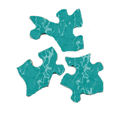
Case Studies Introduction
Case studies are a very effective Omaha System teaching/learning strategy. They are one of the best ways to (1) introduce novices to the Omaha System, and (2) allow experienced users to increase their accuracy and consistency (to ensure interrater reliability) during refresher sessions.
This Website includes 9 case studies developed by expert users who represent a range of practice, education, and research settings. Each case study consists of a story and answers about a realistic but fictitious client (an individual, family, or community). The case studies represent diverse types of clients/patients, practitioners, practice, and practice sites.
More case studies are available. The 2005 Omaha System book includes 18 additional case studies, as well as more details and advice about how to use case studies with your practitioners, managers, educators, and students. Other publications listed on the References section include case studies. Champ Software, Inc. produced two videotapes or DVDs that depict case studies for practice purposes.
Although many case studies are available, you may not find one that exactly duplicates your clients/patients, practice, and programs. As you become more familiar with the Omaha System, you may want to develop new case studies. Consider replicating or customizing the features of the case studies in this Website such as care focus and degree of difficulty that reflect your practice, education, or research characteristics and challenges. In addition, it can be valuable for your group to develop a less-than-familiar story in order to gain practice in using the Omaha System in more difficult or unusual situations that your practitioners may encounter. Individuals who develop Omaha System critical thinking skills should be able to apply those skills to a wide range of case studies, select similar answers, and benefit from listening to their colleagues’ opinions.
Use the following guidelines:
After you have become familiar with the Omaha System, use a combination of lectures, discussion, workshops, role plays, videotapes, and publications to introduce it to practitioners, managers, educators, students, and others.
Use case studies as the next step in the introduction process. Recognize that PRACTICE and accurate feedback are the keys to successful Omaha System use.
Consider that the case study stories ALREADY occurred, and identify answers to reflect care that was actually provided, NOT a care plan. Limit identification of problems and interventions to what occurred in the story, not what could have occurred or what a practitioner would have added if she/he had provided care. The time required to complete a case study increases and user agreement decreases dramatically if a story is used to develop a care plan.
Use case studies to check consensus/interrater reliability among practitioners, students, and others previously taught to use the Omaha System. Positive and accurate feedback is essential for developing skills.
Use case studies to promote discussion about holistic practice; expectations about practitioners' and clients' responsibilities; ethical issues; similarities and differences between the Omaha System and other standardized vocabularies, and generation of data to enhance practice, documentation, and information management.
Use case studies with automated or paper-and-pen versions of the Omaha System to understand how to document care that has been provided. Note: The format used in these case studies does not represent any software or paper-and-pen forms; the case studies are intended to be documentation-system neutral.
The case studies in this Website have two sections:
STORIES-INFORMATION OBTAINED DURING A VISIT/ENCOUNTER/EPISODE OF CARE or PROJECT/INCIDENT: The stories include referral details, data that practitioners or students obtained during the time reflected in the case study, and clues for identification of Omaha System problems, interventions, and ratings. Use critical thinking skills to identify data that are pertinent in the stories and then identify correct answers.
ANSWERS-APPLICATION OF THE OMAHA SYSTEM: The "best answers" for the case studies include the Problem Classification Scheme (domains, problems, modifiers, signs/symptoms, risk factors, and details), Intervention Scheme (categories, targets, and client-specific information), and Problem Rating Scale for Outcomes (numeric ratings for Knowledge, Behavior, and Status). Brief comments, usually placed within parentheses, clarify selected answers, including ratings. Often these or similar brief comments are included in client records as free text or narrative generated by practitioners. The answers that are presented have been judged by experts to be accurate and pertinent. However, answers are always viewed through the lens of each unique practice setting, and are meant to be discussed, challenged, and changed if appropriate. Refer to the stories for data needed to support and explain your choices, and make certain you have the opportunity to discuss your opinions.
When reading the answers, remember some basic assumptions. Because "more is not necessarily better", the goal is to list pertinent answers one time, and not duplicate answers unnecessarily. Although there should be a high level of agreement among those who complete case study exercises, it will not reach 100%. The answers are NOT intended to replicate the complete or exact text practitioners or students would document following a visit or encounter. Therefore, the answers are NOT an example of a legal record. Depending on the practice site, legal records contain diverse combinations of referral and demographic data, medical orders and ICD diagnoses, medication lists, laboratory results, forms such as those required by Medicare, and other materials.
You will need additional preparation if your goal is to teach others about the Omaha System and your initial exposure is occurring as you read this Website and the case studies. Read other Omaha System publications, view videotapes, practice your decision-making with case studies, discuss your conclusions with colleagues, and attend workshops.
If you are interested in developing a case study for inclusion on the Website, please contact Karen Martin.
Case Studies
The 9 case studies presented represent the following client scenarios:
